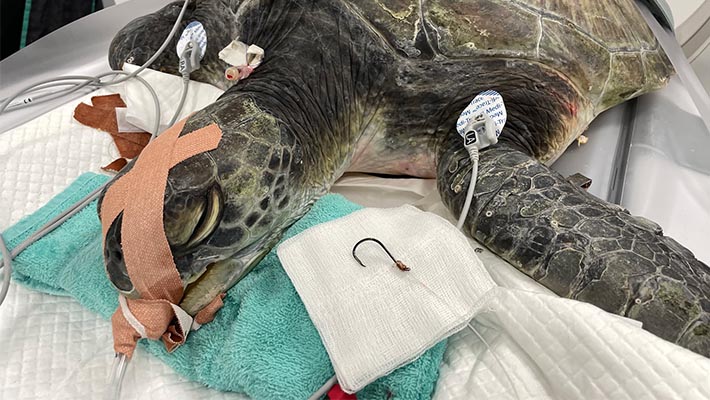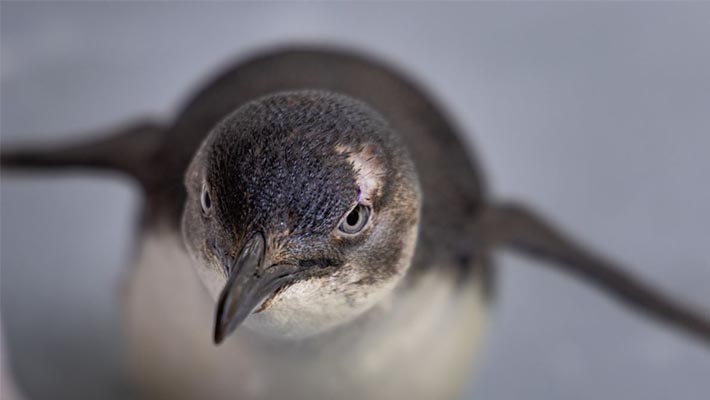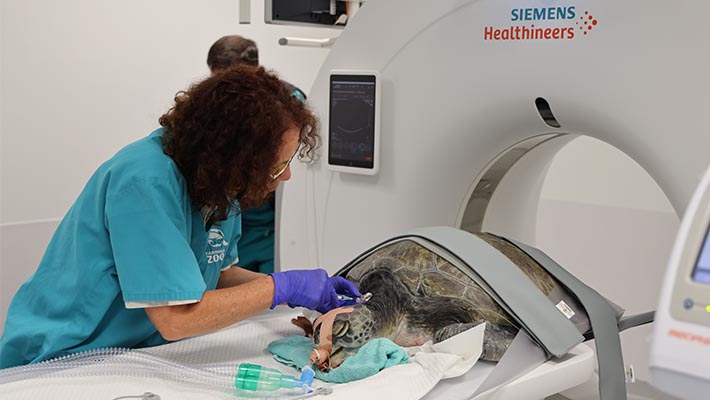Posted on 18th February 2025 by Media Relations
Taronga Wildlife Hospital update: A Green Sea Turtle and Little Penguin's Journey to Recovery
Over Summer, the Taronga Wildlife Hospital team have been busy caring for wildlife. As the weather warms up and people are more likely to be out enjoying the outdoors, chances increase for encountering wildlife. It’s during this time that the Taronga Wildlife Hospital receives an influx of injured and unwell wildlife. Among those this Summer was a Green Sea Turtle and a Little Penguin.



A Green Sea Turtle, affectionately known as Brownie by locals in the Cabbage Tree Bay area in Manly, Sydney, was brought into care by Marine Wildlife Rescue. Brownie was spotted by a snorkeller with a hook embedded in its left flipper and fishing line entangled around its right flipper. Closer inspection also showed that the turtle had also swallowed fishing line. While the rescue team was able to remove the line from around the flipper, the hook and ingested fishing line remained and Brownie was brought to the Taronga Wildlife Hospital for expert care.
This wasn’t the first time that Brownie had visited the Wildlife Hospital. Having previously received care in 2020 for algae growth on its shell, Taronga’s vets and vet nurses recognised the turtle through ID tags. ID tagging before release back to the wild provides important information about the animal, including what treatment they may have received previously, as was the case with Brownie.
This time around, with more serious injuries, Taronga's veterinary team, in collaboration with our friends at SASH Vets, performed a CT scan and endoscopy to assess the extent of internal damage. While the hook in the flipper was removed under anaesthetic, Brownie remained in intensive care and was carefully monitored with contrast x-rays – a special dye that can help highlight internal blockages. This was to see if the swallowed fishing line could pass naturally without surgical intervention. Eventually, Brownie passed 167cm of fishing line – that’s about the height of your average fridge! Curiously, large clumps of human hair were also passed.
In another case, a Little Penguin was brought in from Coogee Beach by two caring swimmers who noticed the penguin was unusually still. WIRES assisted in bringing the penguin to Taronga’s Wildlife Hospital, where our team examined a concerning laceration on its left eyelid. Thanks to the expertise of specialists at Eye Clinic for Animals, the penguin received surgery and is now on the road to recovery.
Brownie and the Little Penguin remain in care. Once assessed to be back to optimum health, they will both return to the wild.
These cases highlight the importance of being vigilant and proactive in caring for our wildlife. Both the turtle and the penguin were fortunate to be found by caring individuals who took action. Unfortunately, not all wildlife are so lucky. If you find injured or distressed wildlife, bring them into the Taronga Wildlife Hospital where they’ll be assessed and treated. If you’re unsure what to do, reach out to your local wildlife rescue group.